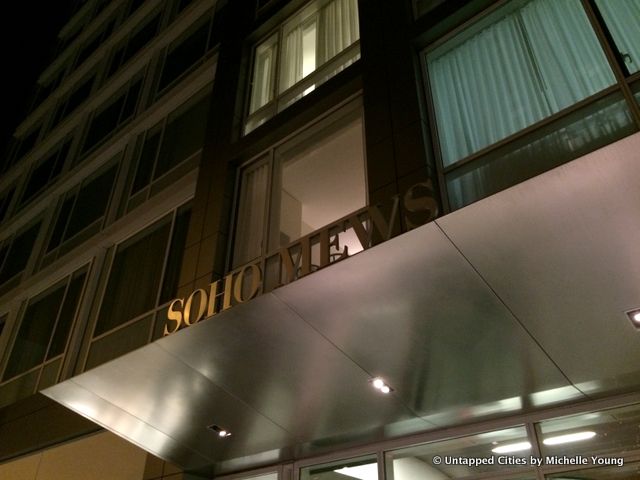Last Chance to Catch NYC's Holiday Notalgia Train
We met the voices of the NYC subway on our nostalgia ride this weekend!

It’s no secret that New York has several mews left over from the horse-and-buggy days, but what’s with the high-rise, 21st century “mews” that apparently have no connection to stables? The term “mews” is perhaps even more abused in real estate jargon than “Gold Coast” these days. First, a definition of “mews,” which comes to us from the Brits. Oxford Dictionary says: “A row or street of houses or apartments that have been converted from stables or built to look like former stables,” or alternatively “A group of stables, typically with rooms above, built around a yard or along an alley.” So without further ado, all the “mews” in NYC that aren’t really mews.

We have to give Gansevoort Mews in the Meatpacking District some credit here, for adding some old-timey elements, like this lantern and the below pedimented entry. This might be perhaps the oldest of this list, built in 1885. The certificate of occupancies from 1920 list the properties as warehouse, storage and a ground level store with “bachelor apartments” above.


The SoHo Mews is an apartment building on West Broadway that was built in 2007, but we don’t see any horses around. It’s a modern building, with a contemporary glass facade that lights up flashily at night–nothing like traditional mews.

Carnegie Mews is a stone clad high-rise apartment building in Midtown.
Gracie Mews in the Upper East Side is a 35-floor full service apartment building with a private driveway.
Stonehenge Mews on East 58th Street between 1st and 2nd is a collection of three, connected prewar buildings. Pre WWI that is, not Civil War.
Clinton Mews on Dekalb Avenue in Clinton Hill is a 1913 loft building, converted into co-ops. The back courtyard has a putting green and the ground floor units of white picket fences, but that’s the limit of any bucolic reference.
There’s nothing mews like about the Henry Street Mews, which is a series of converted industrial properties in Cobble Hill/Carroll Gardens. It’s actually one of the only elevator buildings in the area, according to Streeteasy. But there is a private garden and sitting area.
Sullivan Mews is a series of 10, four and five-story walkups in SoHo. In 2011, an article in The New York Times reported a ground floor apartment to be “dark and depressing.”
Greenway Mews is actually the Colliers Printing House on West 13th Street and West 12th Street, an industrial building that went through a conversion into office and retail space starting in 2004.
There’s not much to say about this non-descript condo complex in Bayside Queens except that it’s not a mews, but perhaps is closer in height to a real mews than most on this list.
And as a bonus, there’s Georgetown Mews in Kew Gardens which is a 60-acre property that has 930 apartments and six bus stops in the complex.
Many of the authentic New York mews have been converted into partially-preserved homes. For example, the Washington Mews housed horses in the 19th century, was converted into artist studios in the early 20th century, eventually was bought by NYU, and today houses the school’s facilities and faculty. Take a look at more mews and small, quaint one-block streets in this article.
This article also written by Michelle Young.
Subscribe to our newsletter